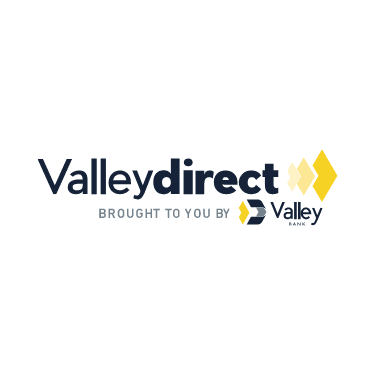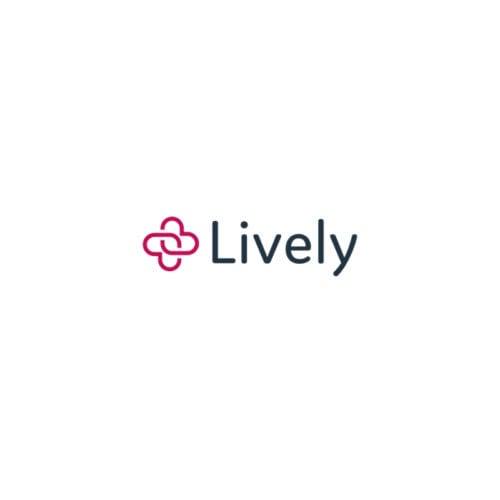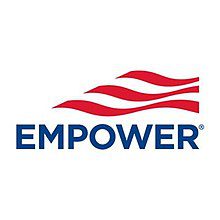No two investors will think the same investment accounts are best. I’ve outlined the top investment accounts below to help you choose the best way to reach your financial goals.
Investing is the best way to grow your money and reach your financial goals. Depending on your risk tolerance, you might invest in things like a savings account or take a risk and invest using a robo-advisor.
19 Best Investment Accounts
Here are the best investment accounts you can open to diversify your portfolio:
- High-Yield Savings Account
- Certificate of Deposit
- Money Market Account
- Brokerage Account
- Retirement Plans
- Health Savings Account
- Flexible Spending Account
- Educational Account
- Government Bonds
- Corporate Bonds
- Series I Bonds
- Mutual Funds
- Index Funds
- Exchange Traded Funds
- Dividend Stocks
- Value Stock Funds
- Individual Stocks
- Alternative Investments
- Real Estate
1. High-Yield Savings
High-yield savings accounts are a conservative investment. If you invest your funds in an FDIC-insured bank, you’re covered up to $250,000 per bank.
While these accounts aren’t an investment, technically, they earn higher interest rates than savings accounts and brick-and-mortar banks. In addition, money in high-yield savings accounts is liquid and is a good place to keep emergency funds or money you’ll need soon.
You can only withdraw funds from your savings account up to six times per month, so only put money in there that you can let sit and grow.
2. CDs (Certificates of Deposit)
Certificates of Deposit or CDs are similar to savings accounts, except you tie the money up for a predetermined time. The longer the CD’s term, the higher your interest rate will be.
You can invest in CDs with varying terms starting at three months and as long as ten years. CDs are a good, conservative option for funds with a specific purpose, such as paying for a wedding or buying a house.
Make sure you don’t choose a CD with an investment term you can’t meet. You’ll pay the penalty if you withdraw funds early, usually three+ months of interest.
You can find CDs at brick-and-mortar banks, online banks, and brokerages.
3. Money Market Funds
Money market funds are investments in various debts, usually government or corporate debt. One fund will equal various debts that differ in riskiness. Money market funds are less risky than stocks but slightly riskier than bonds.
The returns are around the same as high-yield savings accounts but can give you a taste of taking some risk without risking too much in the stock market.
4. Brokerage Account
A brokerage account is an investment account held by a third party. The bank or broker operates on your behalf, buying and selling assets based on your instructions.
The brokerage holds onto your assets and/or the cash they earn until you cash out. You can have a brokerage account in person or online. In-person brokerages are places like Edward Jones or Charles Schwab, both of which made our top list of best investment companies. You can also open brokerage accounts online for a DIY investment approach with sites like e*Trade.
You can own your brokerage account individually or as a joint account, much like bank accounts.
Individual
Individual broker accounts are held only in your name. No one else has access to the account. This means they can’t make decisions or access your funds. For example, if you are married but own the account individually, your spouse can’t speak on your behalf.
Joint
A joint brokerage account is a brokerage account you and another person own together. Both parties have equal access to the funds and the decision-making. The most common joint accounts are between married couples, but you may also have a joint account with a business partner or other immediate family members.
INVESTMENT AND INSURANCE PRODUCTS ARE: NOT A DEPOSIT • NOT FDIC INSURED • NO BANK GUARANTEE • MAY LOSE VALUE5. Retirement Plans (401K, 403b, IRA)
The key to a successful retirement is to consider your future as early as possible. Many retirement accounts are tax-advantaged, which means you get tax benefits now or when you retire, depending on the type of account you open.
There are retirement accounts sponsored by employers and those you can own individually.
401K
A 401K is an employer-sponsored retirement account. Your employer tells you when you’re eligible to invest and your options for investing. The contributions come directly from your paycheck and are taken out before taxes.
Most employers require you to be on the job for a certain time before offering the 401K option, especially if they offer an employer match. An employer match is when your employer matches a portion of your contributions. The amount they contribute is usually related to a percentage of your salary.
For example, if your employer matches 3% of your salary and you make $100,000, they’ll match the first $3,000 you contribute to your 401K.
401Ks have higher contribution limits than IRAs. For example, in 2022, you can contribute up to $20,500 in 2022 and up to $22,500 in 2023. If you’re over 50, you can make catch-up contributions of $6,500 in 2022 and $7,500 in 2023.
Your contributions and earnings grow tax-deferred until you withdraw the funds. If you withdraw funds before 59 ½, you’ll pay a 10% penalty plus applicable taxes. However, if you wait until age 59 ½, you will only pay taxes at your current tax rate.
403b
A 403b is also an employer-sponsored retirement account, but it’s for employees of tax-exempt organizations, such as public schools. It works the same as a 401K with contributions taken directly from your paycheck.
Like the 401K, your employer can match a percentage of your contributions, and your contributions plus earnings grow tax-deferred until you withdraw funds after age 59 ½. After that, the same withdrawal rules apply as well.
IRA (Traditional, Roth, SEP, Simple)
An IRA is an Individual Retirement Account. As the name suggests, it’s not sponsored by an employer. However, as long as you or your spouse is employed, you can contribute to an IRA.
There are a few different options for IRAs.
- Traditional: Your contributions are before tax, allowing you to reduce your taxable income up to the annual IRS limits. Your contributions and earnings grow tax-deferred until you withdraw the funds during retirement, after age 59 ½. You can open an IRA at any brokerage, and you may have more investment options than with a 401K.
- Roth: A Roth IRA is tax-advantaged during retirement. Instead of getting the tax deduction when you contribute, you contribute after taxes, but your contributions and earnings grow tax-free. In addition, if you don’t withdraw funds until after 59 ½, you don’t pay taxes on any withdrawals.
- SEP: The Simplified Employee Pension is a great option for the self-employed, especially if you don’t have employees. The account is through your business. The business contributes to your IRA and can contribute up to 25% of your income, or $61,000 in 2022 and $66,000 in 2023.
- Simple: A SIMPLE IRA is the equivalent of a 401K for small businesses. There’s less administrative work for employers, but the employee contribution limits are $14,000 in 2022 and $15,500 in 2023.
6. HSA (Health Savings Accounts)
Health Savings Accounts are tax-advantaged accounts for individuals or families with high-deductible insurance plans. Your contributions, earnings, and withdrawals are tax-free if you use the funds for eligible medical expenses.
This is an employer-sponsored account; however, if you have insurance through the Marketplace, you can open an HSA at any bank or brokerage.
HSAs work best for people who don’t have a lot of medical expenses and can afford the higher deductible. You’ll have a lower premium, and any money you invest in your HSA, you can use it to cover regular or emergency medical expenses.
You choose how to invest your funds and how to use them. You can roll the funds over each year. There isn’t a specific timeframe you must use them.
The contribution limits for 2022 are $3,650 for individuals and $7,300 for families. In 2023, the limits will increase to $3,850 for individuals and $7,750 for families.
7. FSA (Flexible Spending Account)
A Flexible Spending Account is a separate account for eligible medical expenses. FSAs are only available through your employer. They allow you to earmark a portion of your earnings for savings for qualified medical expenses.
Unlike an HSA, your funds don’t roll over, except for a small percentage, if your employer allows it. In 2022, the contribution limit per employee is $2,850; in 2023, it’s $3,050.
If you and your spouse have FSAs at your respective employers’, you can both have an account.
8. Educational Accounts
If you have children, investing in educational accounts can be a great use of your money. You get tax advantages and can use the funds for any eligible education expense, not just college.
529
A 529 College Savings Plan is a tax-deferred savings account for educational expenses. They are similar to a Roth IRA because your contributions are after-tax, but your contributions and earnings grow tax-free. In addition, if you use the funds for eligible educational expenses, the withdrawals are tax-free.
While the 529 Savings Plan is meant for college, it can also cover expenses such as:
- Room and board
- Textbooks
- Educational expenses for grades K – 12
You can open a 529 plan or your employer if they offer it. Anyone can contribute to your child’s 529 plan, and you can also transfer the account to another child if the child whose name the account is in doesn’t use it.
If you use the funds for anything except school-related expenses, you’ll pay a 10% penalty and owe taxes on any investment gains.
Each state runs 529 plans, so the contribution limits vary, but overall, the federal gift limits apply, which are $16,000 in 2022 and $17,000 in 2023.
Coverdell
A Coverdell ESA is like a 529 plan, but the contribution limits are $2,000 per year. The contributions aren’t tax-deductible, but any contributions and earnings withdrawn are tax-free as long as they’re used for qualified educational expenses.
Anyone can contribute to the account as long as their annual income is less than $110,000 for individuals and $220,000 for married couples filing jointly.
Beneficiaries can use their Coverdell account until age 30. If you don’t use the funds by age 30, it’s best to roll them over into a 529 plan.
9. Government Bonds
Government bonds are loans to a government agency from you. The bond issuer pays you interest in fixed intervals, and you receive the face value back after the bond matures. Government bonds are highly conservative and have low returns. Therefore, they are a good way to diversify a risky portfolio, offsetting the risk of a loss in the stock market.
10. Corporate Bonds
Corporate bonds work like government bonds without a 100% guarantee. However, corporate bonds are riskier than government bonds and pay higher yields as a result.
You can tell a bond’s riskiness by its rate of return. Corporate bonds with higher yields are more likely to default.
11. Series I Bonds
Series I bonds are government-issued bonds related to inflation. The bond pays a base interest rate, then fluctuates based on inflation. If inflation increases, so do your rate of return, and if it decreases, so does your interest rate.
Like government bonds, Series I bonds are risk-free and usually have a 30-year term.
12. Mutual Funds
Mutual funds are diversified investments made possible with pooled funds from many investors. For example, a mutual fund might include stocks, bonds, and other commodities. Mutual funds can be a good investment for long-term investors who don’t have the time to learn the different assets and how to invest in them individually.
You can find mutual funds in various categories, including industry-specific mutual funds and those focused on specific returns, such as dividend-paying mutual funds.
13. Index Funds
An index fund is a mutual fund with all the stocks in a particular index, such as the S&P 500. The fund aims to match the index’s returns without paying for an actively managed fund. Since the funds don’t try to beat the market, they are conservative and work well for investors with long-term investment goals.
Because index funds are tied to the stock market, a long-term investment horizon is important to ride out the peaks and valleys. Investors get a higher return than bonds but don’t have the emotional turmoil of investing in individual stocks and making important buy/sell decisions.
14. ETFs (Exchange Trade Funds)
ETFs are a collection of stocks in one fund, much like a mutual fund. However, unlike mutual funds that only trade once daily, you can buy and sell ETFs during the market’s open hours.
ETFs are a great way to start investing in stocks without picking individual stocks. Instead, you can invest in a specific industry or index and have a diversified fund that, if you hold long-term, may yield higher returns than individual stocks or bonds.
15. Dividend Stocks
Dividend stocks pay investors dividends periodically, usually quarterly or annually, plus you have the advantage of the stock’s growth if the company does well. Their prices may not grow as fast as other stocks, but investors prefer regular earnings from dividends.
You can buy individual dividend stocks through any brokerage, including an online broker. The dividends you earn you can cash out (they are taxable) or reinvest to buy more stocks, increasing your portfolio.
16. Value Stock Funds
Value stock funds are lower priced, so they are good for new investors, but like any stock, there are risks. Therefore, it’s best to add value stock funds to accounts when you can hold onto them for a few years. This gives you time to ride out the peaks and valleys and come out with a profit.
Value stock funds are good in a portfolio because they hold their value when interest rates increase. This is when growth stocks tend to lose value, but value funds perform better.
17. Individual Stocks
You can invest in individual stocks of any company. These are typically called common stocks, and anyone can invest in them. You can invest in most companies’ stocks, but the share price will determine what you can afford. Depending on how you invest, you may be eligible to buy fractional shares or less than a full share of stock. For example, if you can’t afford a full Amazon share but want to invest in Amazon, you may be able to invest a smaller amount and buy a fractional share that still allows you to earn returns at a prorated amount.
18. Cryptocurrencies, Hedge Funds, and Other Alternative Investments
It’s a good idea to balance your portfolio with a few ‘risky’ investments as long as you add conservative investments to offset the risk. Common alternative investments include investing in artwork, hedge funds, and cryptocurrencies. Again, these investments are risky, but when they go well can provide your portfolio with a great return.
19. Real Estate
Real estate investing is another great way to diversify your portfolio. It often counteracts the riskiness of stocks. The nice thing about real estate is you can make monthly income by renting it to tenants. Unlike stocks, real estate isn’t as passive because you must do landlord duties when you rent properties to tenants.
Purchase
When you purchase real estate to sell it, you want to find undervalued real estate that you can fix and sell. Buying abandoned or foreclosed homes at a bargain price and fixing them up usually allows you to sell the homes for a profit. Most investors buy and sell fix-and-flips within six months to a year.
Rental
Rental properties are those you buy and hold. Typically, investors buy homes that are ready to move into and find tenants to rent them. This is how real estate investors make monthly income. The money you earn can pay the mortgage, taxes, and insurance on the property. Any money left is the profit you can use to expand your real estate portfolio or invest in other assets discussed above.
How to Choose The Best Investment Accounts and Types for You
When choosing which type of investment accounts are best for you, it’s important to consider these factors.
Timeline
How far away is your goal? For example, are you saving for retirement 30 years away or buying a house in a few years? Your timeline will determine the balance between conservative and aggressive investments.
Risk Tolerances
Consider how much risk you can handle. Don’t choose investments that will keep you up at night, worrying that you lost everything. Diversifying your portfolio is key, but understanding what you can handle is important too.
Your Financial Situation
How much money do you have to invest, and how much can you regularly contribute? This will narrow down which platforms you can use and how much it will cost. Review your situation with a financial advisor to ensure you contribute what you can, but don’t put yourself into a tax situation you can’t afford.
Your Need for Additional Help
Are you comfortable investing yourself, or do you need hand-holding? If you want help, consider whether you want a human or are comfortable letting a ‘robot’ handle your investments.
Managing Your Investments Accounts
Choosing how to manage your investment accounts is a personal decision. First, decide whether you want a hands-off approach or a say.
Both ways are feasible; it just depends on how much you understand and if you can avoid making emotional decisions. Many robo-advisors offer the best of both worlds, allowing you to customize your portfolio.
Still, the robo-advisor reallocates and ensures your portfolio is on track to reach your goals.
Frequently Asked Questions
Now that you know how to invest your money, it’s time to create your financial plan!
Is now a good time to start investing?
Anytime is a good time to start investing. As part of the cycle, the market will have peaks and valleys for many years. Investing now ensures that your money has more time to grow. Of course, there’s no perfect time to invest, so always invest when you can.
How much can you invest?
You can invest as much as you want. Of course, there are limits if you’re investing in retirement or other tax-advantaged accounts. However, there aren’t limits on taxable accounts, so invest what you can afford.
Is there a difference between active and passive investing?
Active investing means you actively manage your accounts. You watch their performance and reallocate your portfolio as needed. Passive investing is a hands-off approach, such as letting a robo-advisor create and manage your portfolio. All you have to do is fund the account.
What is risk tolerance and why is it important?
Risk tolerance refers to how much risk you can afford to take. It considers your timeline, what you’re comfortable investing in, and what you can afford.
Why is having a diversified portfolio important?
A diversified portfolio offsets losses. For example, if you invest in the stock market and it crashes, but you have money in real estate, you won’t lose your entire portfolio because real estate and stocks typically perform opposite each other.
How do you choose a broker that is right for you?
Choosing a broker is an important decision. You want someone you can work well with who understands your financial goals. They should have the same investing beliefs as you and be willing to help you reach your goals.
How do I open an online brokerage account?
It takes only a few minutes to open an online brokerage account. First, you must prove your identity and fund your account by linking a checking account to it. Once you’re verified, you are free to start investing.
What is a cash vs. margin account?
A cash account means you invest only the amount of cash you have. A margin account is like a loan. You invest with some cash and borrow the rest. Buying on margin can be risky, especially for beginners, and should be avoided until you have enough experience.
Which is the Best Investment Account for You?
Choose a few of the best investment accounts to reach your financial goals and start today. It doesn’t matter if you start with $5 or $5,000. The key is to start now, whether you open a high-yield savings account or go all in and open a brokerage account.










No comments yet. Add your own